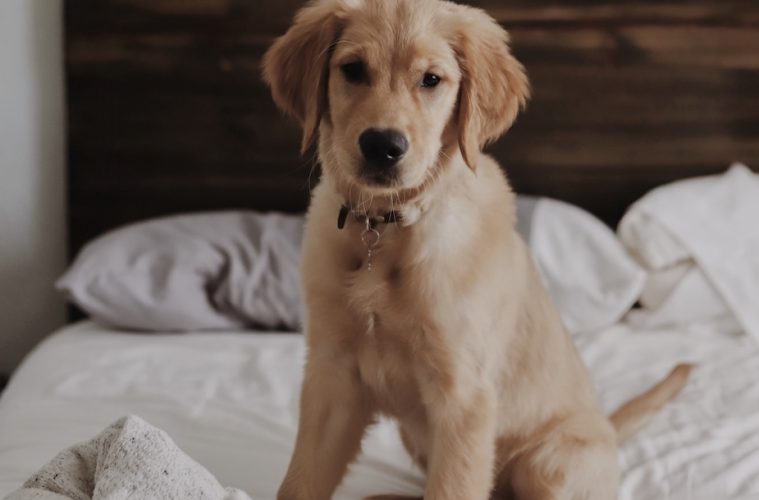Our sneezy reaction to pollen is thanks to our ‘adaptive immunity’, but do our pets share this allergy?
The crazy answer is yes! Your beloved pooch or feline can suffer from the sniffles this spring, although it doesn’t happen as commonly as with us humans. ‘Hay fever is an allergic reaction, not a physical irritation, to pollen or dust, which are known as allergens.
In humans, this often comes with signs such as sneezing, runny nose and swollen eyes,’ says Dr Guy Fyvie, vet and Hill’s Pet Nutrition’s adviser. ‘Pets will also suffer from allergic reactions to these allergens, but other than sneezing to physically get rid of the pollen, they will show different signs to humans. This will show as irritation and inflammation of the skin, paws and ears, which will become red, itchy and possibly swollen. They may also potentially show gut signs like diarrhoea.’ It most commonly occurs seasonally, when plants and grasses are producing and releasing more pollen. But it’s not just pollen that can make your pooch itch – there are fleas and dust mites too.
MANAGE IT
‘As with humans, the best cure is avoidance, which is not always easy when there is pollen found everywhere, including in the air,’ says Dr Fyvie. Here are some everyday tips for you to keep sniffles away from your hound:
- Avoid letting affected pets go near flowering plants and grasses and keep them inside especially when it’s windy.
- Regular washing or even wiping their coat with a wet cloth can also reduce the pollen contact.
- If needed, visit your vet for medication and specific veterinary diets that are designed to help your fur child maintain a strong skin barrier and reduce the inflammation and itch. It is always a good idea to start the preventative treatment early in spring, before the plants flower.
- Keep your dog’s ears clean to help prevent any irritation from over-grooming.
- Wash bedding regularly and clean their kennels and vacuum regularly.
Pest control
Now that your furry friends will be spending more time outdoors – frolicking and rolling around in the grass – they run the risk of attracting annoying pests, namely fleas and ticks. Invest in a good tick and flea treatment to protect them from all kinds of critters. There are many different options out there these days, from powders and liquids, to collars and tablets. Also make sure their sleeping area, beds and blankets are clean, because these can be a delightful breeding ground for unwanted bugs.
Stash safely
It’s spring, so chances are you’ve dusted off your gardening boots and you’re ready to get stuck in. If you’ve ravaged your local nursery and come home with litres upon litres of fertilisers, insecticides and herbicides, then the first thing you need to do is find a pet-safe spot to stash them away, because their ingredients could be dangerous to an inquisitive dog.
Our fluffy pets: can’t live without them, can live without their hair
For furniture
- Use dampened rubber gloves and rub your hands over all fur-covered surfaces. Rinse the glove when it’s covered in hair and repeat. Don’t have rubber gloves? A wet sponge will work well too.
- Cover their favourite spots with a pet blanket.
- For wooden furniture, spray on generous amounts of furniture polish and clean
with a soft cloth.
For floors
- Vacuuming won’t do much on hardwood floors. Instead, try an electrostatic or microfiber dry mop, which will trap particles.
- On your carpets, scrape something with a rough surface, such as a pumice stone across the top. This helps gather the hair, making for easy vacuuming.
For washing
- When washing the pet-only blankets, add half a cup of white vinegar to the cycle to help further loosen the hair. Once it’s done, you can simply scoop all the remaining pet hair out of the drum.
[Image via Unsplash]

